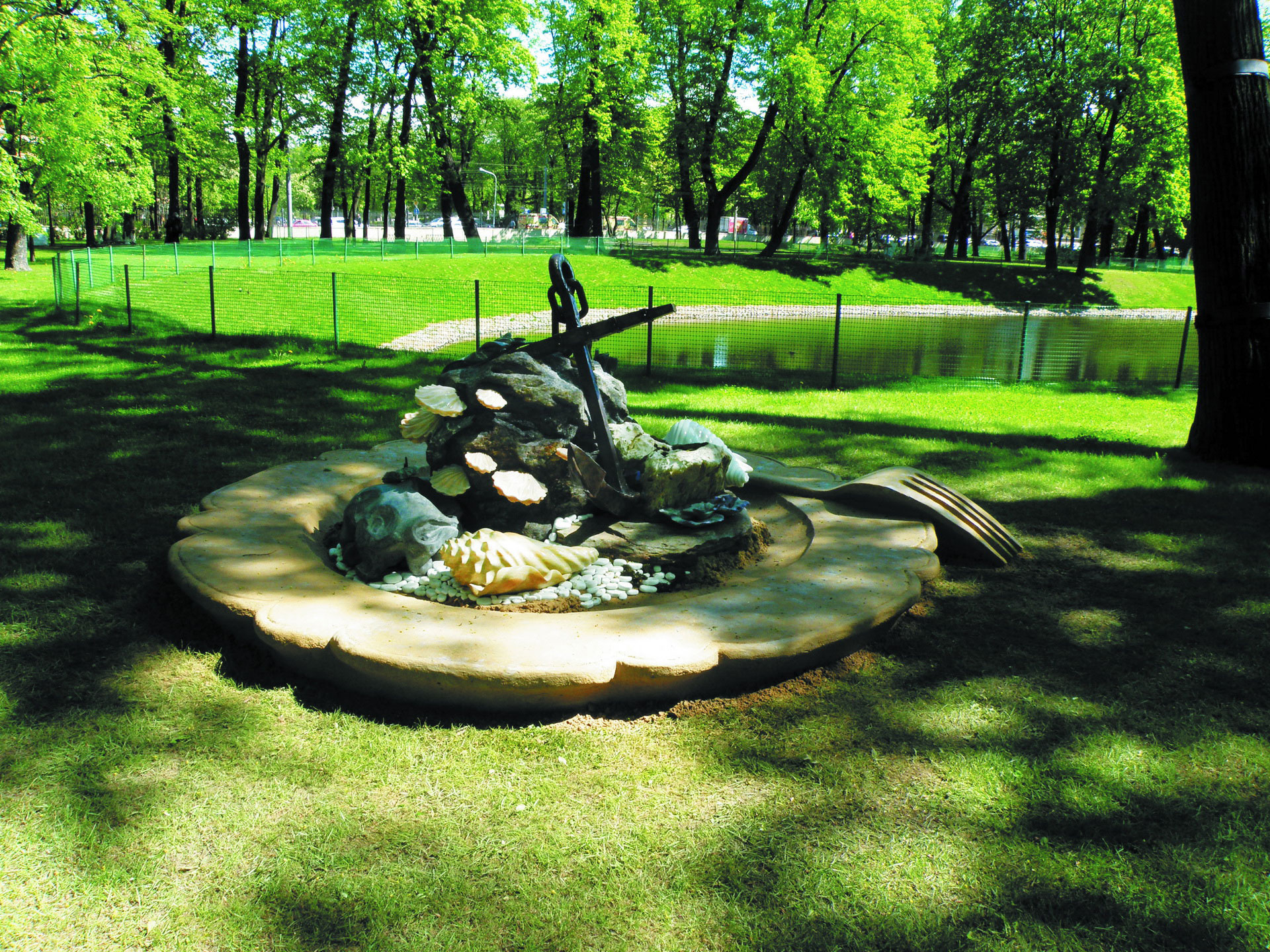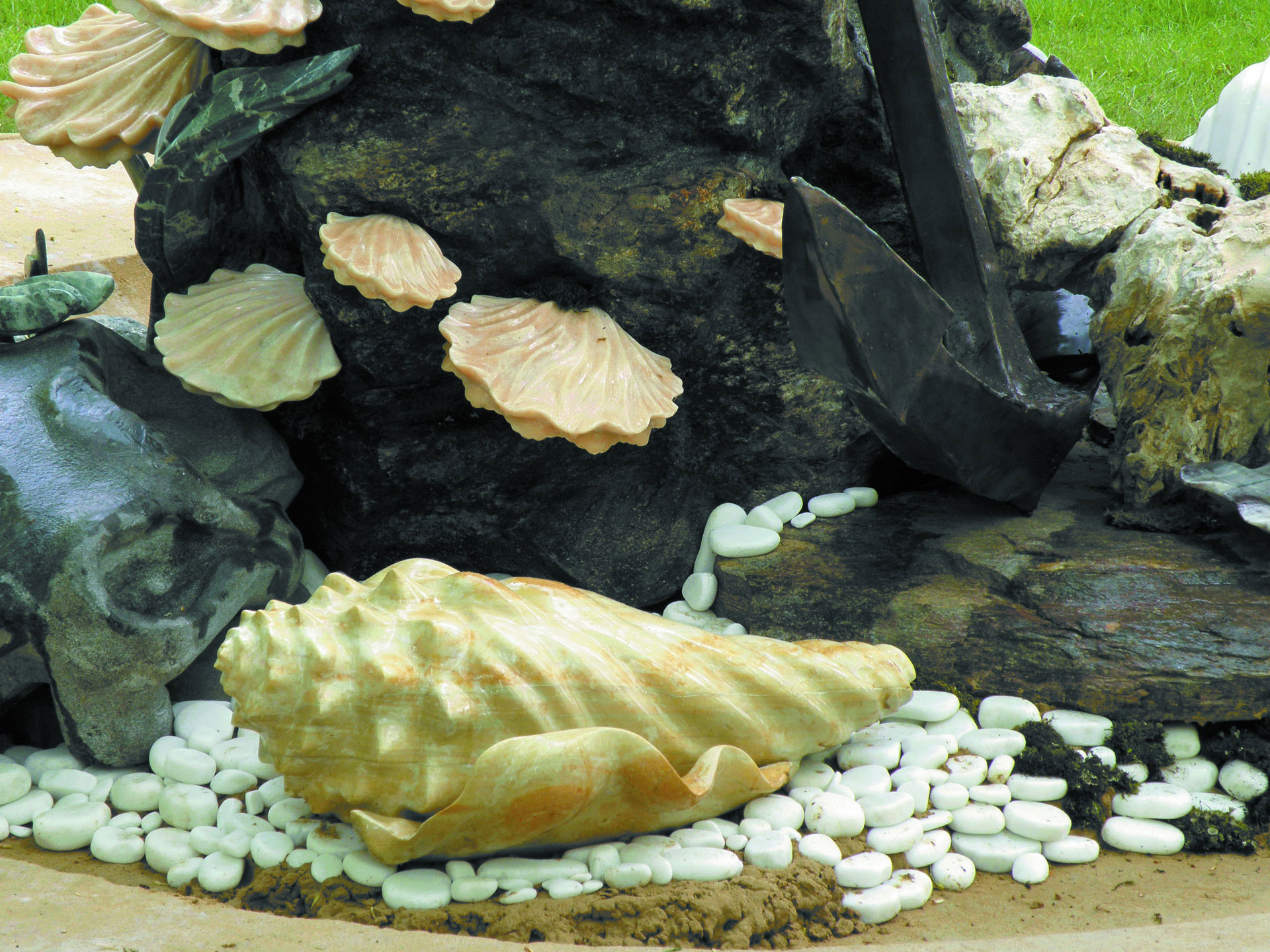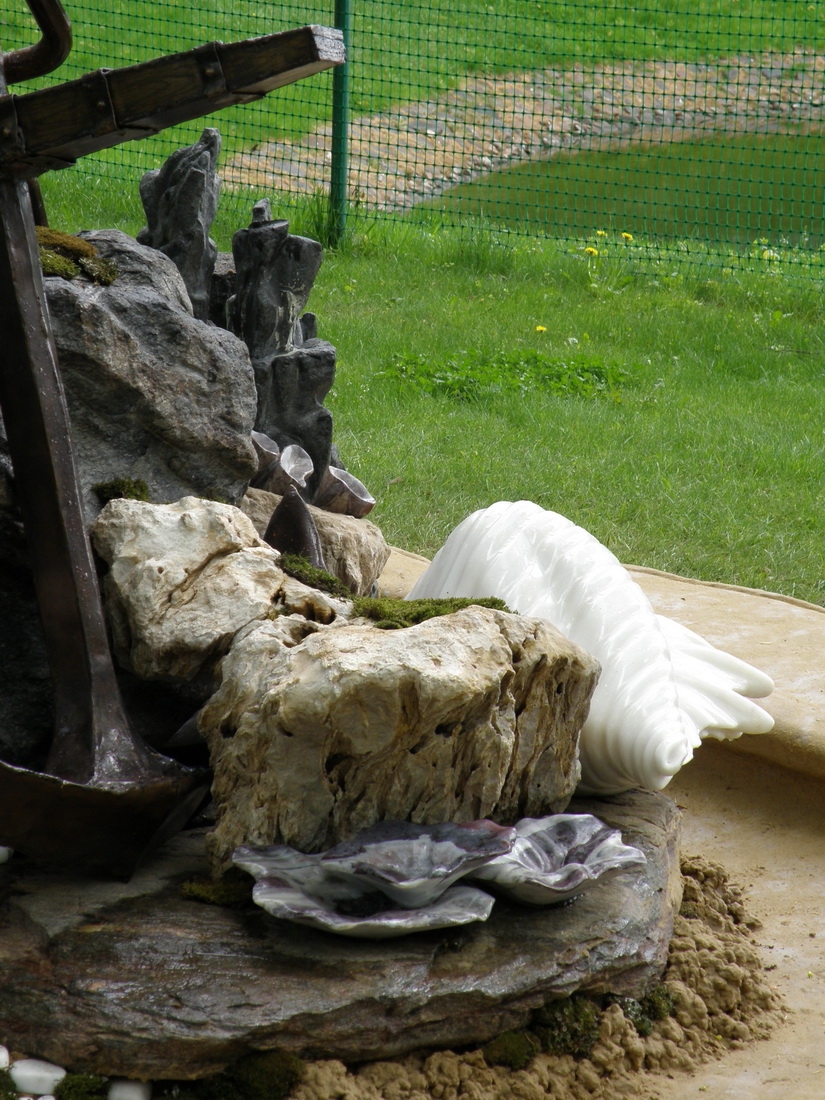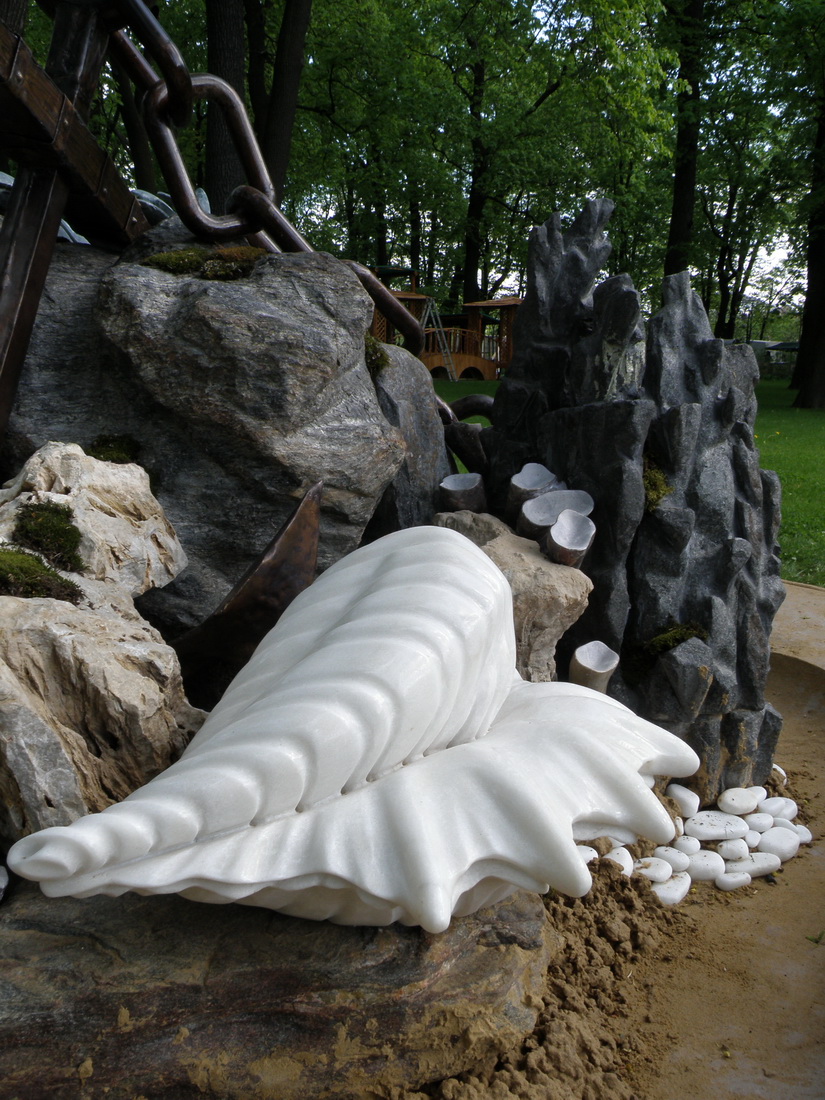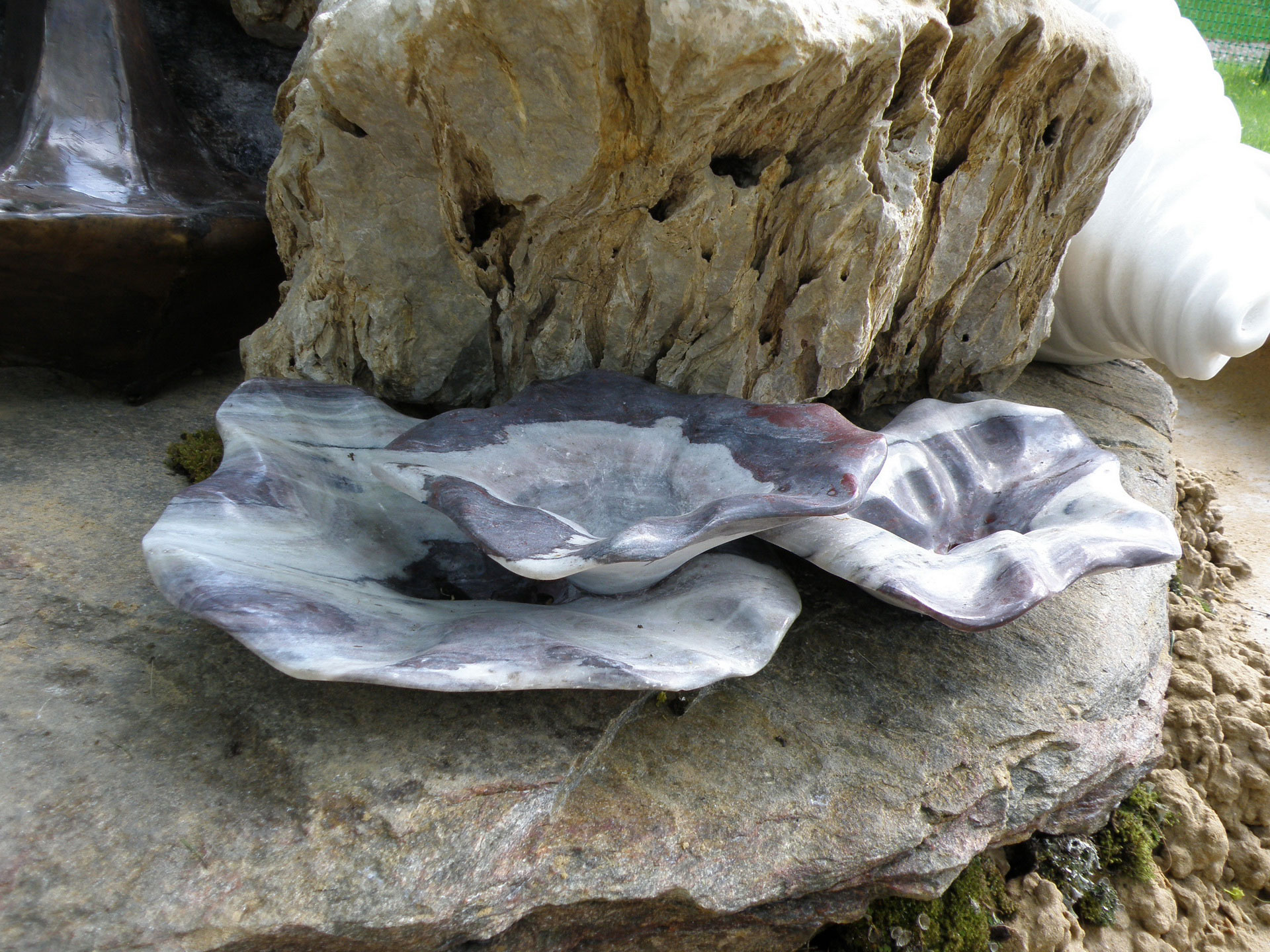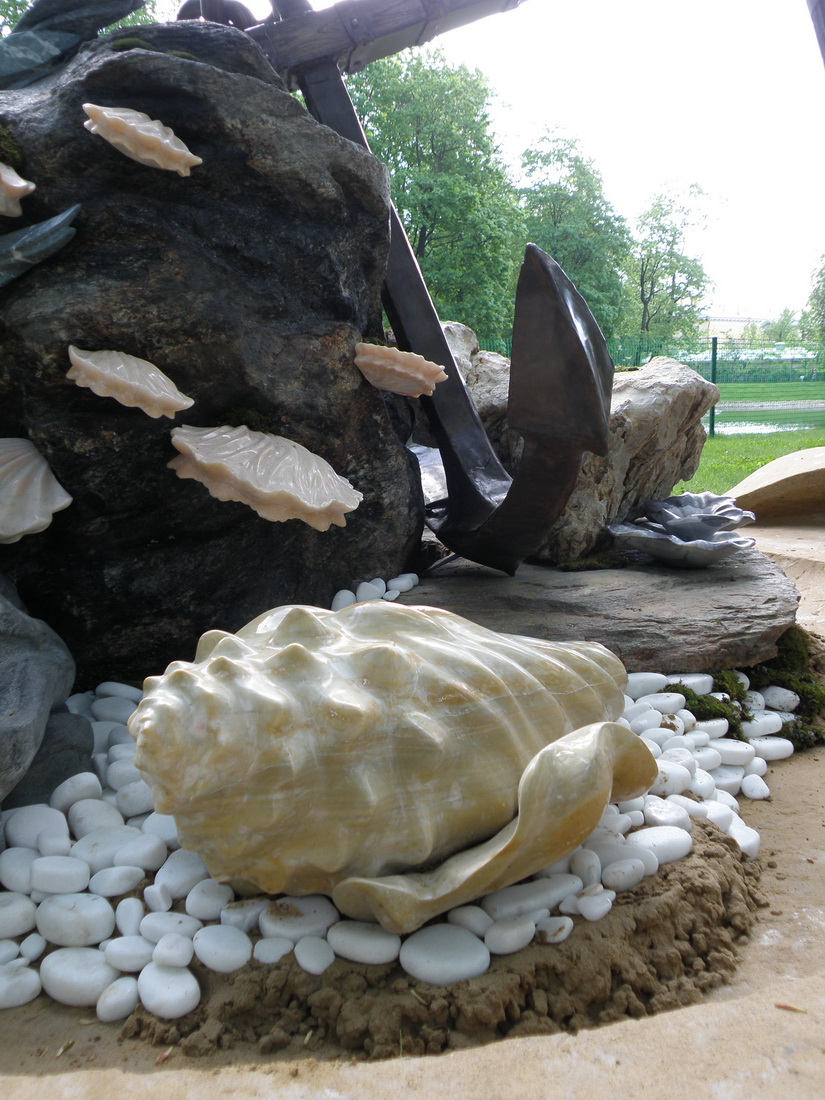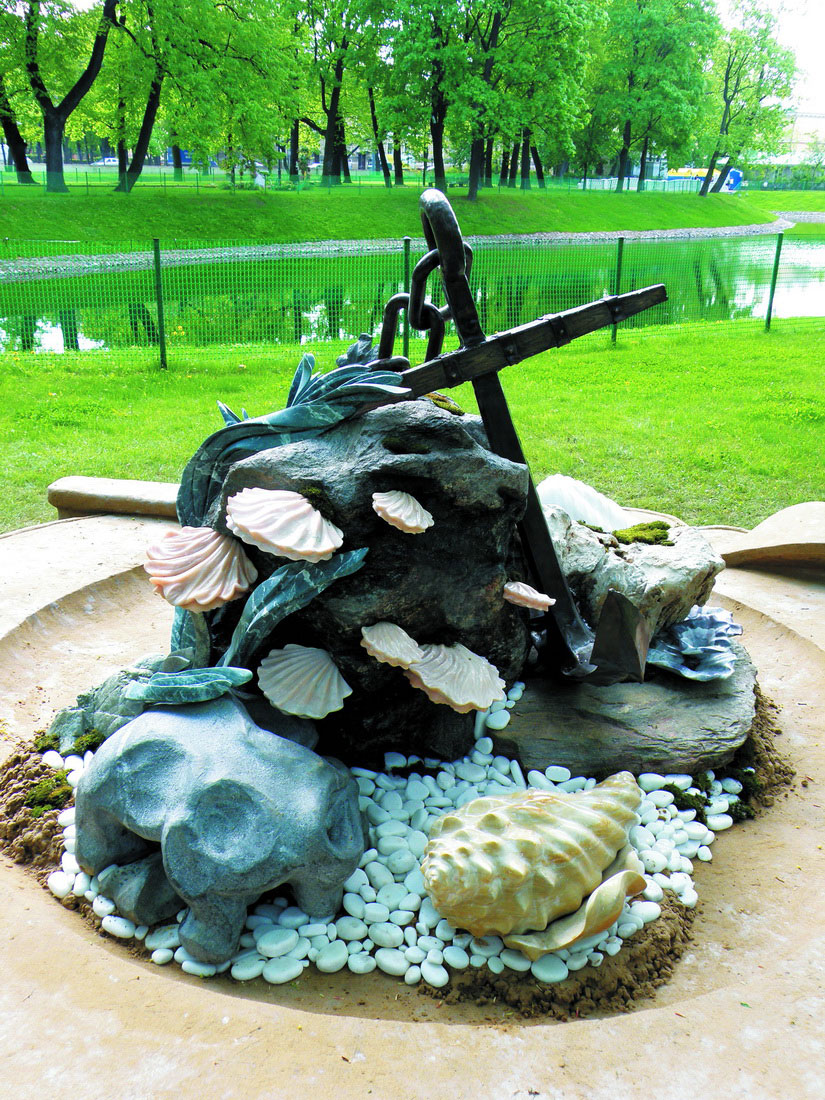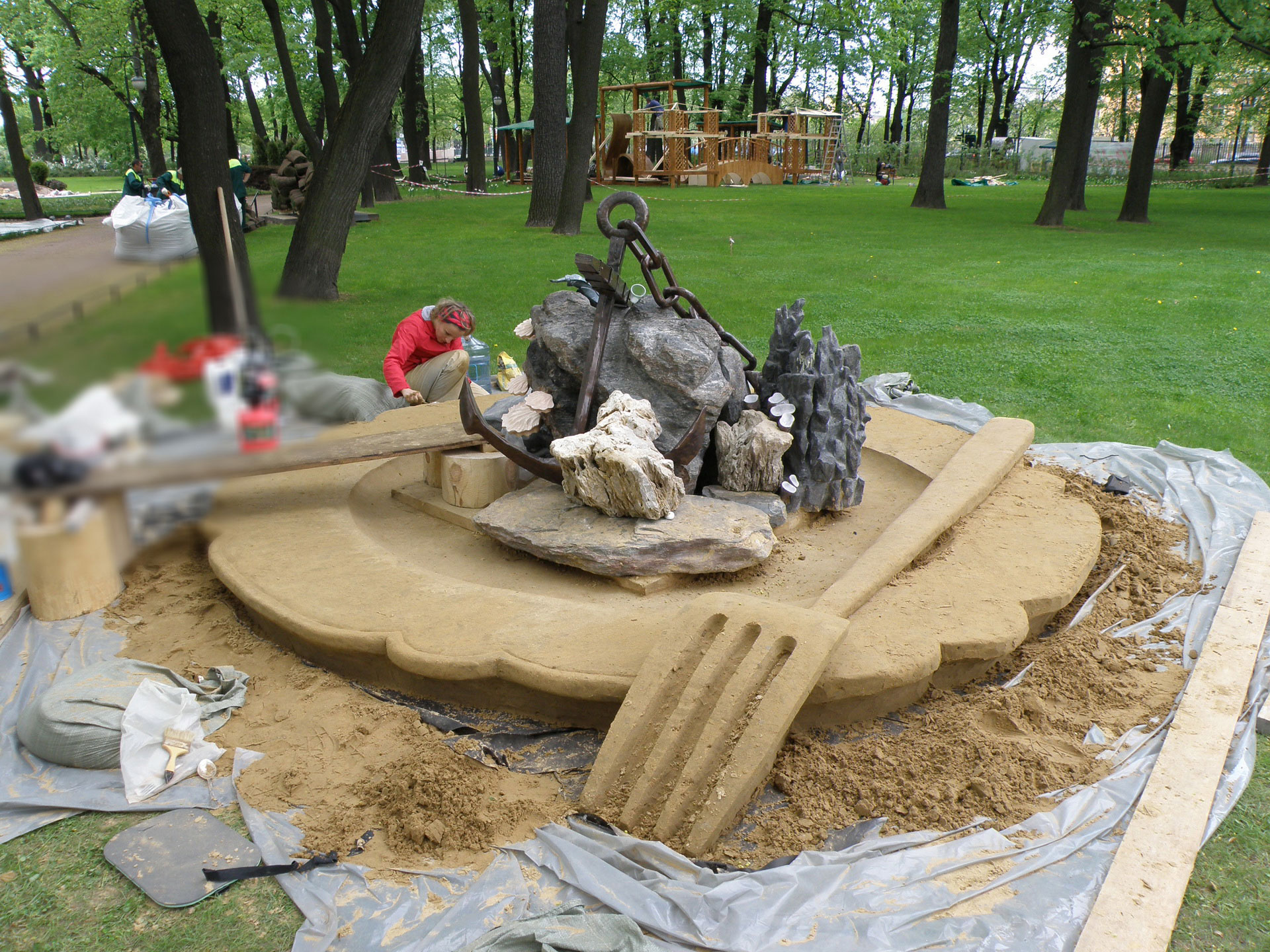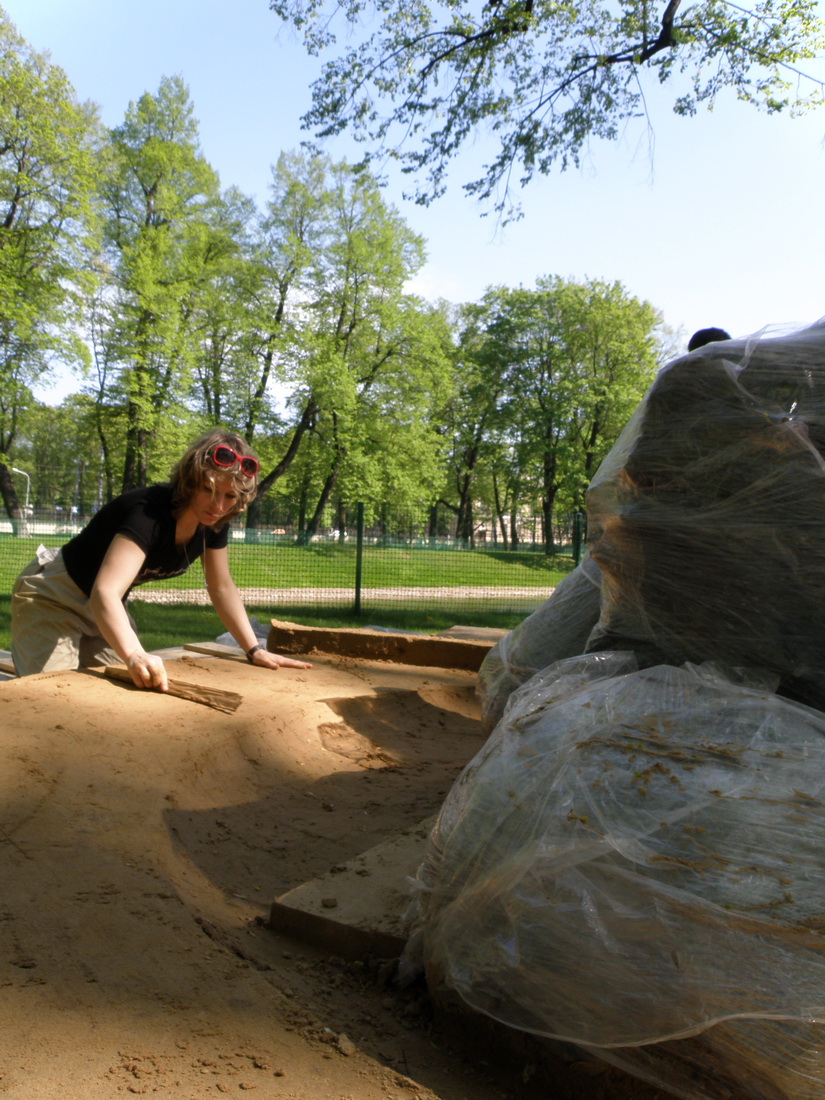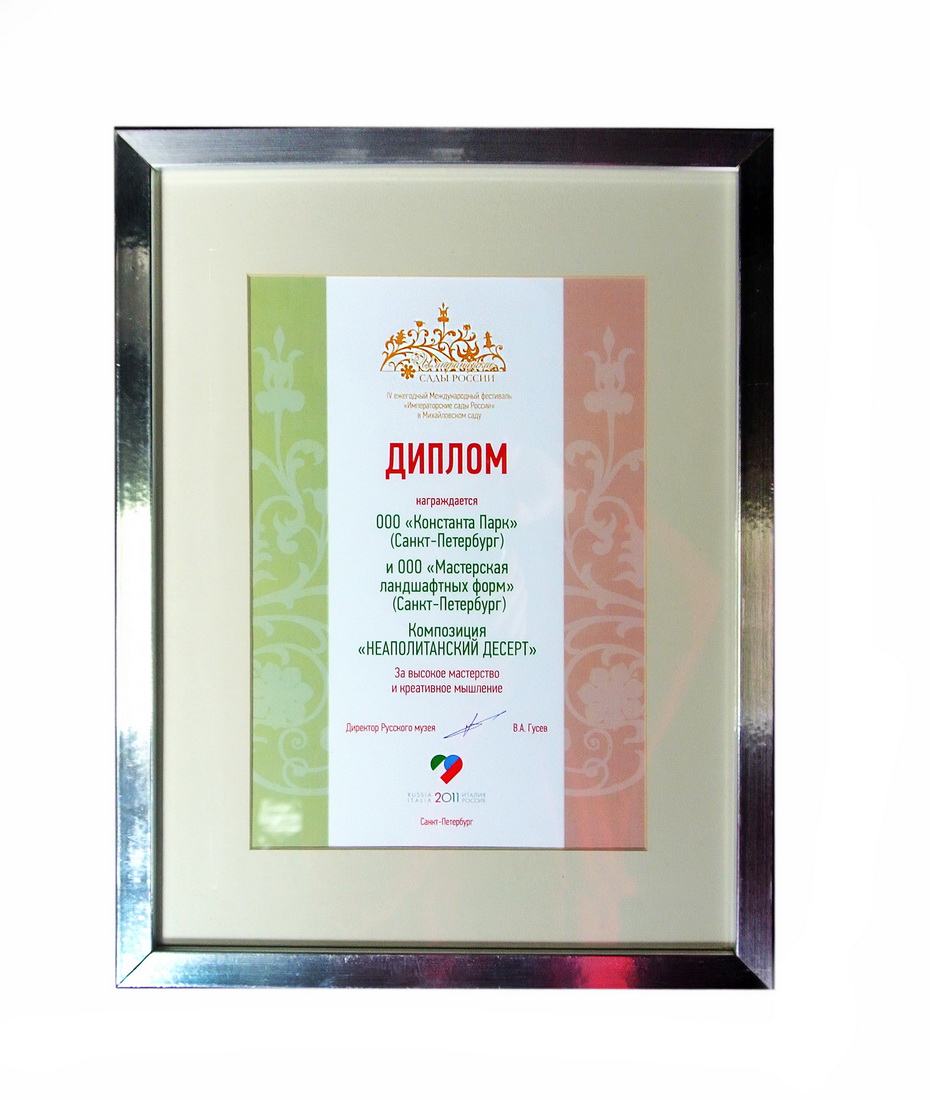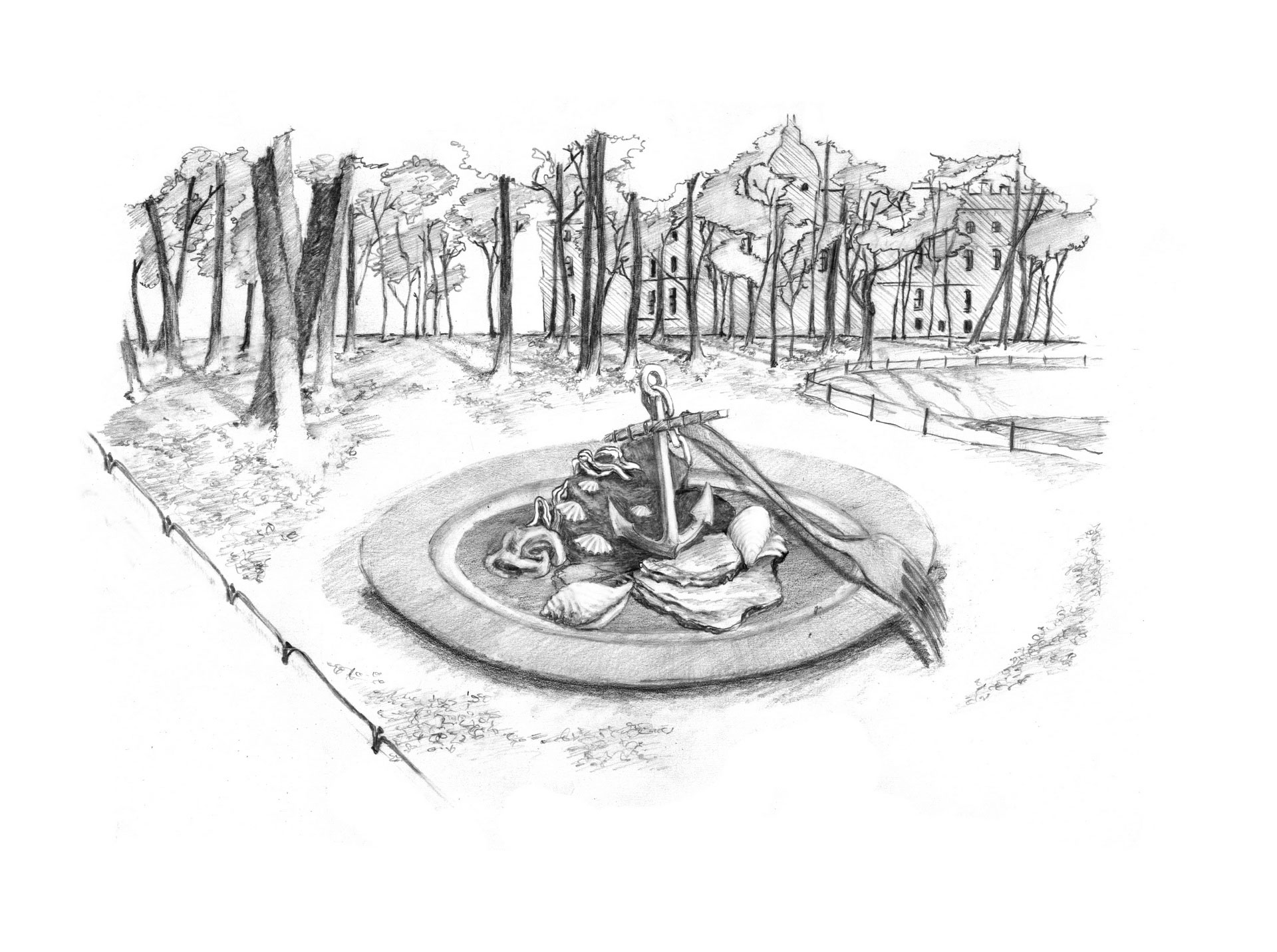
Imperial Gardens 2011
The festival and exhibition-competition “Imperial Gardens of Russia” in 2011 were dedicated to Italy. In the “My Italy” nomination, participants were asked to express their personal impressions, memories, ideas about Italy. The plots of works of art and culture, the characteristic features of the landscape and Mediterranean flora, the unique flavor of regions and cities, the national traditions of Italians – all these plots could become the basis of projects. For the comprehensive implementation of our competitive project, a site was chosen, located in the eastern landscape part of Mikhailovsky Park. Dimensions of the composition: height 1.2 m, dish diameter about 3 m.
Our dessert is a piece of the seabed, symbolizing two opposite sea characters. El Mar and La Mar. Sea-Man and Sea-Woman. So the fishermen respectfully called the sea in Hemingway’s novels. The Sea-Man is a cruel element, punishing and unforgiving, with storms and storms, bringing death and demanding respect. In the composition, it is rough granite and slate slabs, mottled and torn, but hard and resistant. The sea woman is a gentle breeze, a playful touch of the reflections of the waves, a warm shore, a nurse and fate. We have corals, algae and shells made of delicate Mediterranean marbles and crafted by craftsmen in a soft and smooth manner. The achieved contrast leads the viewer to the search for comparisons with the characters of the city of Naples. The bustle of the seaport, the majestic bulk of Vesuvius, the gentle coast, a full bowl of sea gifts, Neapolitan beauties and the criminal world glorified by cinema. A city where life is cooked according to one of the hottest and brightest Italian recipes. The ratio of majestic history, masculinity seething from the excess of the sun, beauty and subtle aesthetics in everything from architecture and love to kitchen traditions, the danger of poor neighborhoods and the hospitality of the townspeople. And the ancient anchor in the center of the composition recalls the great events and people who made history on the shores of the Tyrrhenian Sea.
The shortbread dish with a dessert fork was invented by the authors to convey a light and playful attitude to this metaphorical composition. We kind of invite you to try the Neapolitan recipe and appreciate the contrast of the elements of the city to the aesthetic taste of the viewer. And everyone, after tasting, will describe it in his own way, just as Naples he sees will open up to the guest with a unique blend of impressions. Sea sand does not hold its shape for long, time easily washes it off. Its fragility reminds us how bright and transient a beautiful moment of discovery is. Splashes of dizzying impressions on the streets of the city will evaporate over time, but the delicate taste of the Neapolitan dessert may beckon the guest there again and again.
The achieved contrast leads the viewer to the search for comparisons with the characters of the city of Naples. The majestic bulk of Vesuvius and the gentle coast, the bustle of the seaport and a full bowl of sea gifts, Neapolitan beauties and the criminal world glorified by cinema. Beauty and subtle aesthetics in everything. A city where life is cooked according to one of the hottest and brightest Italian recipes.
The sand dish with a dessert fork was invented by the authors to convey a light and outrageous attitude to this metaphorical composition. Interestingly, of all European countries, it is in Italy that the fork is the first since the 17th century that the fork becomes a necessary attribute at the meals of the Italian nobility and merchants, and the oldest fork, which was found in the southwest of the country, is now stored in the Neapolitan National Museum. She is already more than 2.5 thousand years old.



